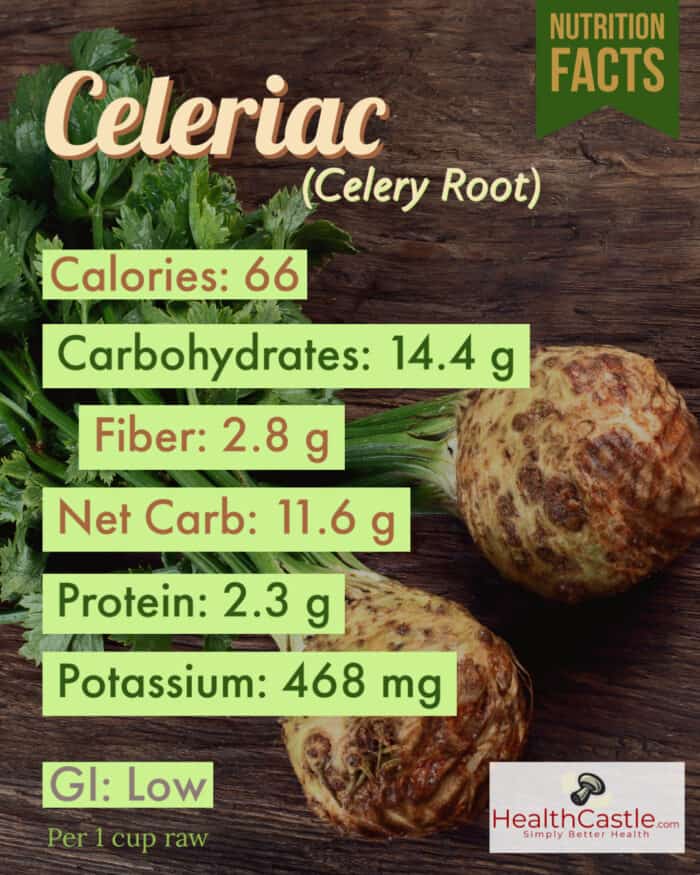
Written By: Owennie Lee, RD
Title: Registered Dietitian
Alumni: University of British Columbia
Last Updated on:

It is probably fair to say that celeriac is one of the most ignored root vegetables in North America. Also known as celery root, soup celery, celery knob, and turnip rooted celery, celeriac is a special type of celery that was originally grown in Northern Europe and the Mediterranean, and is still a popular ingredient for Europeans. Roughly the size of a turnip, celeriac has a large, bulbous root that is covered with thick, rough skin that is marked by brown patches. Its unglamorous appearance does not do its flavor justice – its crisp texture, as well as its celery and parsley-like flavor, is a great addition to any dish that goes well with celery. As celeriac’s peak season starts from October through April, it is now the time to enjoy this relatively lower-carb root vegetable and reap its nutritional benefits.
Table of Contents

Compared to other root vegetables, such as potatoes and carrots, celeriac is very low in calories, as it is only 5-6% starch by weight. Celeriac has a net carb of 11.6 grams and glycemic index value of 35, making this low-carb root vegetable ideal be used in place of other starchy root vegetables for people with diabetes. Celeriac is an excellent source of vitamin K (providing 80% DV in one cup), rich in potassium, and is also a good source of calcium.
It is best to pick celeriac with small to medium-sized roots, which tend to be more flavorful and less fibrous. Although the stalks and leaves are usually not eaten, the sprouting green tops should be bright green and the root part should not have brown soft spots. Celeriac can be stored in the refrigerator for up to a week, wrapped in a perforated plastic bag with its stalks and leaves removed.
Alumni: University of British Columbia – Owennie is a registered dietitian with a soft spot for chocolate and coffee. She is a believer in balance and moderation, and is committed to keeping healthy eating enjoyable and fun. Owennie received her dietetics training in Vancouver, and is a member of Dietitians of Canada and the College of Dietitians of British Columbia. She has experience in a wide variety of settings, such as clinical nutrition, long-term care and outpatient counseling. Owennie has also worked for a community nutrition hotline and participated regularly as a guest radio host, where she enjoyed sharing her passion and knowledge about food and nutrition with people.
celeriac, celeriac nutrition, celery root, healthy every month, nutrition facts, potassium, root vegetables, vitamin c
What is the real glycemic index of the cook celeriac
Christine it’s a great question. I had previous done searches for it but didn’t find it. I mistakenly believed it was similar to celery. Only after I received the dismaying results of my glucose tolerance test I discovered the cause. Once cooked it has a VERY HIGH Glycemic index:
Celery root 35 (raw), 85 (cooked)2
https://www.ncbi.nlm.nih.gov/pmc/articles/PMC3650508/
It was in: Adv Nutr. 2013 May; 4(3): 356S–367S.
Published online 2013 May 6. doi: 10.3945/an.112.003509
PMCID: PMC3650508
PMID: 23674805
On the line “Celery root 35 (raw), 85 (cooked)2” I realize the footnote number was listed. It should be removed.